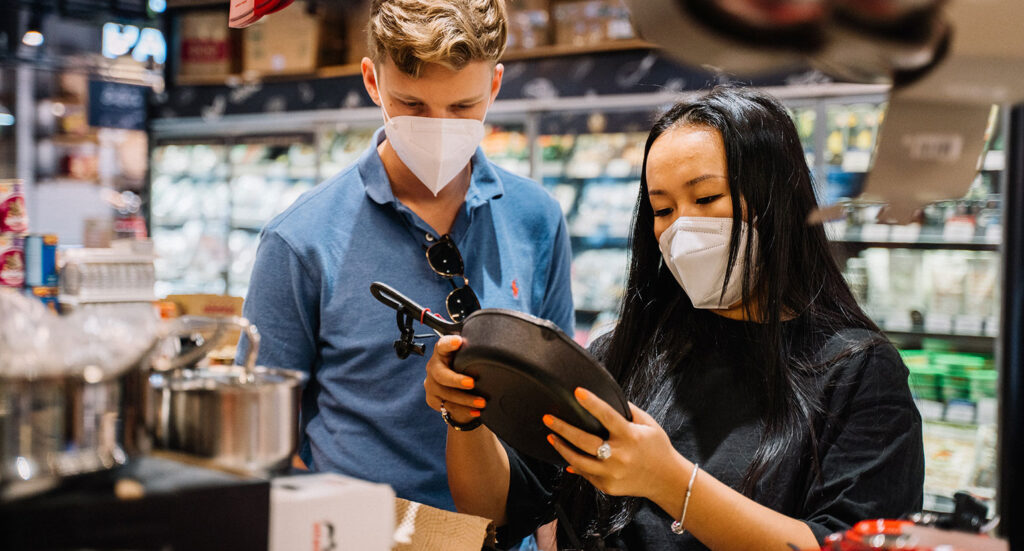It was always going to be a volatile earnings season and with Australia’s largest listed retailers revealing their performance in recent weeks, there are some mixed feelings.
Brands that successfully surfed 2020’s first wave of Covid-impacted consumer behaviour changes have now learned that was the best and longest ride.
These businesses have since had the unenviable task of trying to comp 2020 numbers in 2021, and based on the results now turned in, many didn’t quite get there, despite having a great first half of FY22.
The reality is that 2020 was a year like no other. Those conditions may never be repeated, so retailers shouldn’t get hung up on trying to match those results. Plenty of businesses have already accepted this. It’s probably why JB Hi-Fi bundled its results with the year prior, to show it did pretty well in 2021, compared with pre-pandemic activity.
Regardless, we all need to raise our sights, look through the numbers and learn the good lessons to set up a solid future as consumers now settle into this ‘new normal’ we’ve been hearing about for two years.
State of play
This is where we are: the hybrid model of work is here to stay for many white-collar workers. There is a new learned level of comfort and even reliance on online shopping in many segments, as well as a hesitance to return to old levels of public transport use – that coffee shop at the train station will continue to see reduced patronage compared with 2019. And an increase in demand, combined with supply-chain issues in some segments, means we still can’t get everything we want at the price we want. Case in point, we’re still paying through the nose for a decent used car.
Elsewhere on the landscape, we’re seeing a quick bounce back to domestic travel and tourism but a slower-to-develop international market, which is keeping more Aussies onshore for holiday and leisure in the short- to medium-term.
Stick to the basics
There are always winners and losers with large-scale shifts in consumer behaviour, and this time is no different. The best way to ensure you maximise the opportunity is to recognise the important trends, walk a mile in your (new) customers’ shoes, and apply good old retail basics to what looks like a new situation.
Service delivery is still a benchmark by which consumers judge all retailers, and now it’s not just in-store but also online. Take the example of JB Hi-Fi, which experienced a whopping 93 per cent year-on-year increase in online sales in FY21, to $780 million, up from 56.6 per cent growth in FY20. Those customers, many of whom have likely moved across from shopping in-store, expect the same level of service, regardless of the channel where they shop.
Key to all elements of service delivery is a highly engaged workforce. Results for several retailers show an increase in expenses to keep staff safe and engaged. Smart brands are recognising the importance of looking after their workforce to deliver to heightened customer expectations now and into the future.
Invest in data
Another key to raising the bar in customer-centricity is the use of data, in particular first-party data. Once again, this investment must grow as changes continue at pace in online targeting, specifically the phasing out of cookies used to track people and re-target ads. Retailers such as Coles, Super Retail, and Bunnings continue to invest in first-party data, seeing the enormous opportunities to bring their customers personalised, more relevant offers at scale. It will probably be one of the great discriminators of the next decade in retail at all levels.
And we shouldn’t forget the need to meet customers’ growing expectations of a soft footprint on the planet, a trend that is affecting all retailers and one that requires further investment. Coles, for example, has set itself the goal of becoming Australia’s most sustainable supermarket, a plan that’s starting to come to life already at its Moonee Ponds store in inner-city Melbourne, where shoppers can refill reusable containers with laundry detergent, shampoo, and soap and where unnecessary plastic packaging has been given the boot. Similarly, the new Woolworths Group logo speaks to the brand’s commitment to “creating positive impact”.
Retailing is about spotting opportunities in consumer behaviour and that hasn’t changed. It is still about picking the larger and longer-lasting shifts and investing to take advantage of them as best you can.
Sometimes, these shifts are more pervasive and significant – like we’ve seen with the pandemic – rather than just an emerging new season’s colour palette. The costs to respond are accordingly more significant but so, too, is the prize. So the cost shouldn’t deter smart, successful retailers and neither should this motley earnings season.




